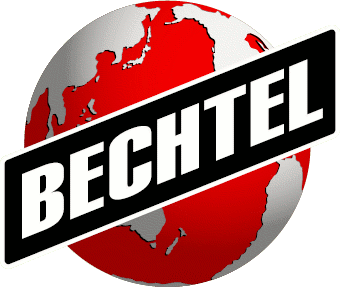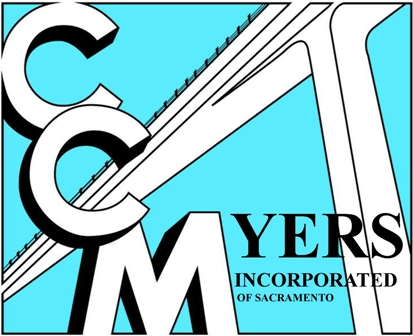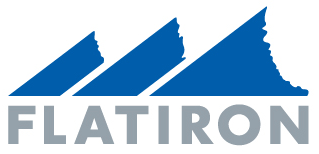© 1996-2011, Integral Vision Inc., All rights Reserved
(The logos or names of other products & companies mentioned herein may be trademarks of their respective owners)
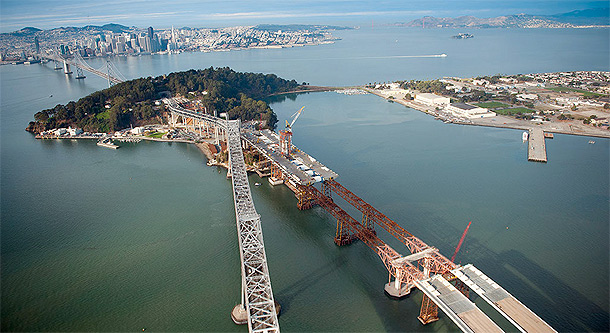
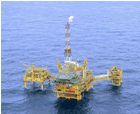
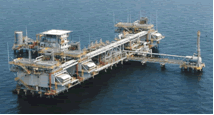
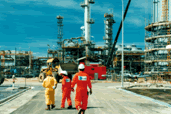
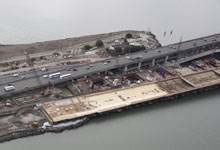
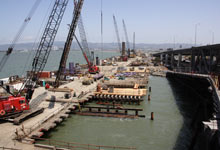
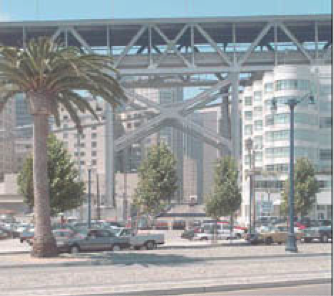
This contract involves the seismic retrofit of the Bay Bridge West Span structures Bents A & B at Main Street, Pier W-1 at Spear Street, Yerba Buena Island Anchorages Cable Bent, demolition of the City's Bay Bridge Pump Station and construction of new pump station.
Construction started early October 1999 and was complete by fall of 2001.
Retrofitting the cable bent and Bents A & B will involve adding additional steel plate and replacing rivets with high-strength bolts. Bracing between the towers of Bents A & B will be added in the form of an x-frame above the roadway level of Main Street. Pier W-1 will be strengthened by placing a concrete jacket completely around the columns and shear wall.
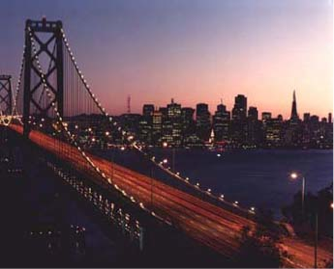
West Bay Span Towers
This segment of the contract involves the seismic retrofit of the steel towers atop Piers W-2, W-3, W-5 & W-6. The retrofit measures included replacing rivets with high strength bolts throughout portions of the towers. Adding new plates and replacing all the rivets with high strength bolts retrofit many of the existing gusset connections. Also, additional plates needed to be placed along portions of the longitudinal faces of the tower legs and at W-6, along the longitudinal and transverse faces, and at various strut and diagonal locations at all towers. Replacing existing rivets with high strength bolts strengthened the Cable Saddle connections at the top of towers.
West Bay Suspension and Span Superstructure
This segment of the contract included the "twin" suspension and the Continuous Span Truss. The East and West Suspension Trusses are located between Pier W1 and Yerba Buena Island Anchorage. The Continuous Span Truss is located between Pier W1 and the San Francisco Anchorage. This seismic retrofit involved strengthening the existing bottom lateral bracing under the lower deck and placing a new lateral bracing on the upper deck of the suspended truss. Additionally several of the chords and all the diagonal members for all the trusses needed to be strengthened.
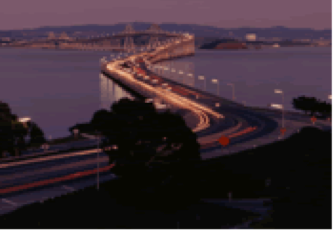
Caltrans strengthened piers, installed massive shock absorbers and completely replaced the lower trestle section on the Marin County side — while keeping the span open to traffic during the four years of construction. Caltrans was using various Access databases, Excel spreadsheets and Bidcom web based software to manage all the project documents.
Integral Vision was approached for a possible integration of all these various systems. After a presentation of the capabilities of PMIV, Caltrans decided to move all the data from these different databases into PMIV and to replace the Bidcom software with PMIV.net.
PMIV eliminated the re-handling of data input and improved the communication between project team members.
"In the Richmond/San Rafael bridge project, PMIV-Document Control replaced over 10 different databases, various Excel spreadsheets and the BidCom web application that were all stand-alone, reducing input activities, eliminating re-handling of data, increasing the effectiveness of the project team. Our Consultant Designers use the PMIV.net integrated with PMIV intranet. We have a better control and visibility of all our project documents and accomplish a definite cost saving for the project."
- Caltrans Richmond/San Rafael bridge project
The new East Span Bay Bridge encompasses multiple projects: the 1.3-mile skyway; a Self-Anchored Suspension span consisting of 525 foot tower supporting a bridge deck connecting the skyway bridge to Yerba Buena Island; Yerba Buena Island transition Structure; the Oakland Touchdown, the east end of the bridge connecting to the toll plaza area and the Yerba Buena Island Temporary Detour.
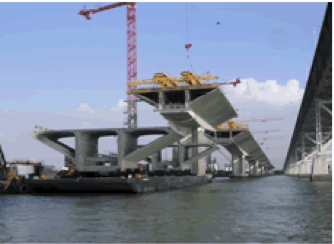
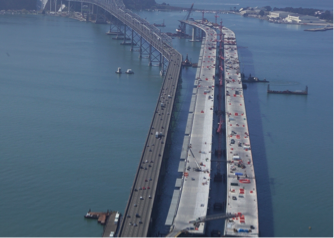
The Skyway, which comprises much of the new East Span, will drastically change the appearance of the Bay Bridge. Replacing the grey steel that currently cages drivers will be a graceful, elevated roadway supported by piers, providing sweeping views of the Bay. The side-by-side east and westbound decks will each have five lanes along with 10-foot-wide shoulders to help keep traffic flowing.
Extending for more than a mile across Oakland mudflats, this is the longest section of the East Span, between the new Self-Anchored Suspension (SAS) span and the Oakland Touchdown. In addition to incorporating the latest seismic-safety technology, the Skyway is up to current transportation requirements with standard shoulders and lane widths. Designed specifically to move during a major quake, the Skyway features several state-of-the art seismic safety innovations.
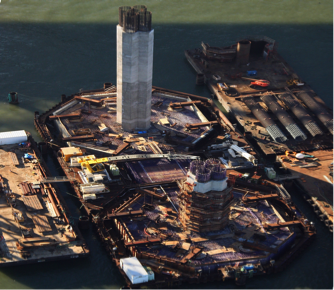
The E2T1 foundations project was the final foundation contract for the marine portion of the San Francisco Oakland Bay Bridge. The Construction of the piers at E2 and T1 required significant on-water resources to drive the foundation support piles down, not only to bedrock, but also through the bay water and mud. The T1 foundation consisted of a large fabricated steel foundation box attached to 13 eight-foot diameter CIDH piles. The T1 foundation piles extend 196 feet below the waterline and are anchored into bedrock with heavily reinforced concrete rock sockets that are drilled into the rock. Driven nearly 340 feet deep the steel and concrete E2 foundation piles were driven 100 feet deeper than the deepest timber piles of the existing east span in order to get through the bay mud and reach solid bedrock. The E2 foundation was two fabricated steel frames attached to 16 eight-foot diameter CISS piles. Additionally the concrete columns were cast to just under the final cap construction to be completed on a subsequent project.
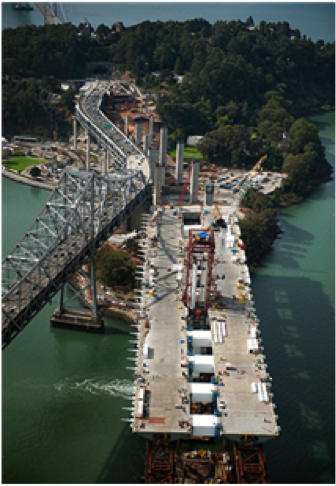
If one single element bestows the status of world-class on the new Bay Bridge, it is the Self-Anchored Suspension (SAS) Span. This engineering marvel will be the world's largest SAS Bridge (2,047 feet).
The SAS is not just another suspension bridge. Traditional main cable suspension bridges have twin cables with smaller suspender cables connected to them. These cables hold up the roadbed and are anchored to separate structures in the ground. While there will appear to be two main cables on the SAS, there is actually only one. This single cable is anchored within the eastern end of the roadway. The cable is carried over a single tower and wraps around the two side-by-side decks at the western end.
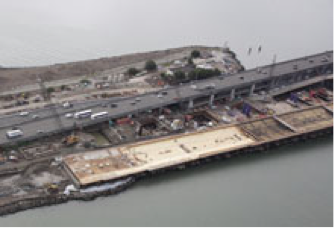
The Oakland Touchdown (OTD), located just west of the Bay Bridge toll plaza, will connect Interstate 80 in Oakland to the new side-by-side decks of the new East Span. The project involves building two roadway sections and a new electrical substation, in addition to extensive relocation of underground utilities.
For westbound drivers on I-80, the OTD will be their introduction to the new, graceful East Span of the Bay Bridge. For eastbound drivers from San Francisco, this section of the bridge will carry them from the Skyway into the East Bay.
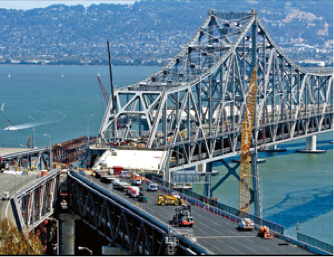
The Yerba Buena Island Detour contractor, C.C. Myers, has rolled out the existing bridge span and rolled in the new east tie-in span of the detour structure that diverts traffic off the existing bridge to the detour structure that now ties into the Yerba Buena Island Tunnel. Work is now progressing on the demolition of the old approach span and construction of a number of accelerated foundations for the future transition structures from the Self-Anchored Suspension (SAS) bridge to the tunnel. Upon removal of the old approach span, the area will be turned over to the Yerba Buena Island Transition Structures (YBITS).

